Tenant screening plays an essential role in keeping your property safe and secure for existing tenants. While approving an application brings you one step closer to signing a new…
continue reading
8+ Sample Proof Of Residency Letters
-

Sample Proof Of Residency Letters
download now -
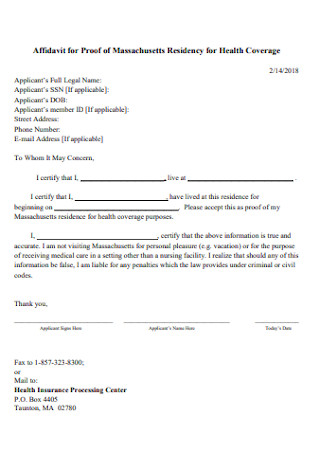
Proof of Massachusetts Residency Letter
download now -
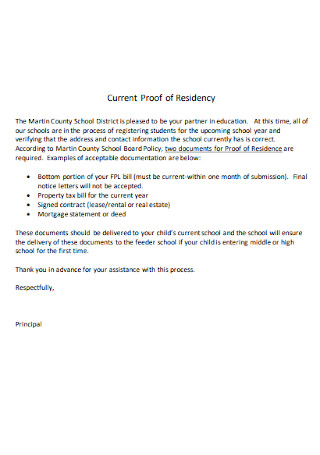
Current Proof of Residency Letter
download now -
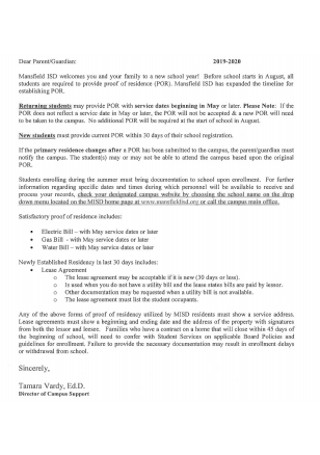
Proof Of Residency Letter Format
download now -
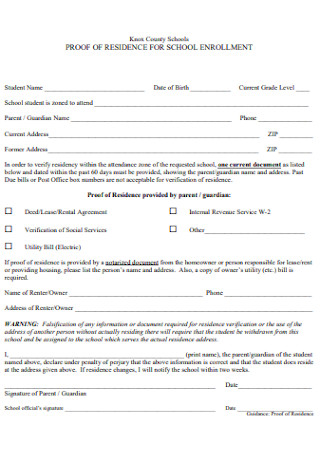
School Proof of Residency Letter
download now -

Basic Proof of Residency Letter
download now -
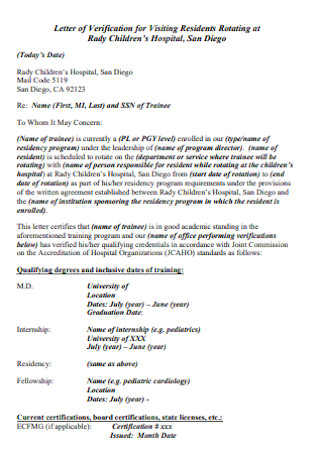
Letter of Verification Proof Of Residency
download now -
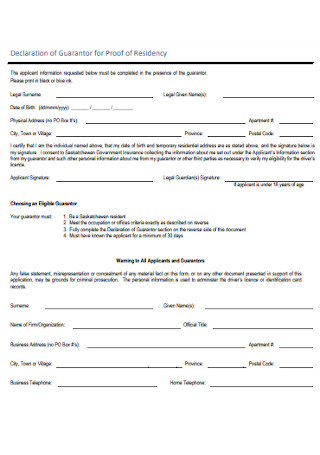
Guarantor of Proof Of Residency Letter
download now -
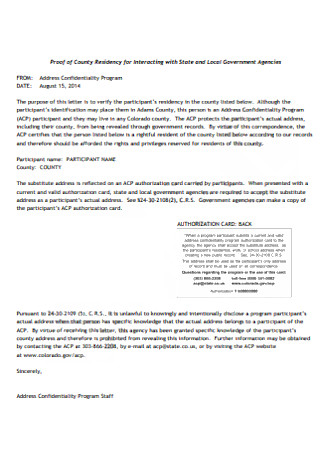
Proof of County Residency Letter
download now
What Is a Proof of Residency Letter?
The proof of residency letter is basically a written document proving a person’s residence in a specific state or area. This affidavit or sworn statement confirms that you legally reside at an address, which is often required for getting a driver’s license, receiving special benefits in your state, etc. And it is encouraged for the letter to be notarized because proof of residency letters without notary acknowledgment may be considered null.
A 2020 survey confirmed that around 329.48 million people resided in America.
Why Should You Make a Proof of Residency Letter?
The proof of residency letter is important in case anyone questions if you are a legal resident of a certain area or not. That way, you have solid evidence if anyone dares to kick you out of your house or files a lawsuit against you concerning residential matters. And its validity even strengthens more with notary acknowledgment. Also, this detailed letter is a requirement for many purposes so you might as well make one ahead to be prepared. From registering to vote, verifying your immigration status, proving your address for utility bills, and being eligible for residential special benefits, the proof of residency letter grants you such opportunities.
The Proof of Residency Letter’s Functions by Type
A proof of residency letter helps you in covering for insurance programs, government agencies, and a lot more. But did you know that its main functions are actually categorized into six types? In this section, you will learn about the proof of residency letter’s functions according to type.
What to Include in a Proof of Residency Letter
Although people may have varying contents for the proof of residency letters, there is also a common structure noticed in most examples. And this leads you to identify the basic parts or what to include in a standard proof of residency letter.
How to Make a Proof of Residency Letter
You already know that proving residency can be acknowledged with the proof of residency letter. But all the elements and intricate details inside the letter should not be taken for granted as it might get rejected instead. Hence, take every detail into consideration before actually submitting the letter to whom it is concerned. Thankfully, you should not worry much about how to create the said letter because you only need to observe these six steps:
Step 1: Gather Your Evidence First
What is a proof of residency letter without proof in the first place? Hence, search back your previous legal documents relating to your residency as they can help you gather information about what to write in the letter. This goes from confirming when you started living in a specific area, how long you resided there, and more. Other helpful documents are your bank statement, health insurance card, driver’s license, residential lease agreement, tax return, mortgage statement, utility bill, and voter registration card. You are all good if you have at least two of them already.
Step 2: Use a Sample Template
Now that you have enough data on what to write in the letter, expect to transfer the necessary details in a sample template of your choice. See those sample proof of residency letters posted in this article? Simply pick your preferred version and you won’t have to make a letter from scratch. You only insert what’s missing so you can write the letter as easily and quickly as possible. What is even better? The format is changeable so you can alter it however you want.
Step 3: Begin Inserting the Letter’s Essential Parts
As discussed previously in what to include in a proof of residency letter, you are familiar with the basic elements from the letter heading down to the official signature. And you have to ensure you got those important parts covered in your letter too. Otherwise, you might forget the crucial points. For example, it would be a disaster not to include your tenancy period even though you stated your address because it does not clarify the duration or your length of stay in that area. And if you need to add more relevant parts, then do so.
Step 4: Keep It Brief yet Detailed
The most important tip in writing a letter is to provide brief statements with just the right amount of detail. The problem with some letters is they are too short but not detailed enough or that they are too long but the important points are missing. First of all, focus on giving direct answers from your address, tenancy period, and so forth. But to keep them detailed, you better write the full address and that your tenancy period’s details were arranged chronologically.
Step 5: Attach Evidence and Have It Signed by the Notary
The process of gathering evidence earlier won’t come for naught now that you need them in the letter as additional attachments. May it be a mortgage statement, lease agreement, or any other relevant document that helps prove your residency, attaching it to the letter is good to make the document more credible. And one important thing is to ensure that the letter is notarized. A notary public’s signature validates the letter big time. But, make sure not to make the letter too bulky because you don’t need lots of documents to attach; at least two important documents are enough.
Step 6: Stick to the Truth and Finalize the Format
In making a sworn statement, you have to tell the truth and nothing but the truth. Lies can get you to serious penalties along with consequences you don’t want to imagine. So be sure to review if everything you wrote is honest and accurate enough. An assessment is even recommended to ensure you can rectify every error that is yet to be changed in the document. Lastly, finalize the preferred design or format you want for the letter. For whatever format you use, make sure the document is still readable and looks professional. You can’t have a poorly written letter as evidence in the first place.
FAQs
Who can write the proof of residency letter?
Anyone who needs to prove his/her residency can create a proof of residency letter. But, it can also be the case of who is capable of proving your residency. Hence, a family member, roommate, landlord, or employer can write it. And who writes the document may depend on the requirements stipulated by who made the request for you to verify your residence.
What are acceptable alternatives to a proof of residency letter?
Bear in mind that what are good substitutes to proof of residency letters would vary from state to state. But oftentimes, you can depend on a government-issued identification card, utility bill, residential or property lease agreement, bank statement, driver’s license, car registration, any government letter, or a notarized affidavit of residency.
Is a pay stub a reliable proof of residency?
Yes, it is possible for a pay stub to be used for proof of residency if it clearly stated your name and complete address. Study the stub’s content if it has enough detail to verify your residency because you can’t depend on it if it doesn’t. But, you still have to consider the laws in your state if they accept them or not.
From as simple as proving where a parent’s child lives down to the challenges of testifying one’s residence in court, it is no surprise that the call for a proof of residency letter comes in various situations. And to ensure you are prepared with reliable evidence when asked about an affidavit of residence, allow sample proof of residency letters to headstart the process. Each editable sample or printable document keeps you ready for those in doubt of your residency. Draft your own evidence by downloading now!

